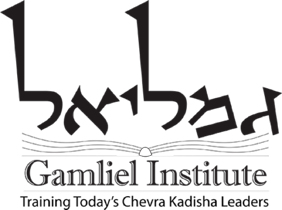Translating Maavar Yabbok
Kavod v’Nichum is beginning to identify experts who are able to assist with translating Maavar Yabbok from Hebrew to English. If you are interested in working on any aspect of this project – translation, editing, historical context, study guide, or illustration – or know someone who might be interested, please be in touch with David Zinner – dzinner@jewish-funerals.org. Of course financial support will also be needed. If you, or someone you know, is interested in helping fund this project, please let us know.
Rabbi Steven Moss writes:
I think the time is most appropriate to take on this [translation] project. Maavar Yabbok is an incredible text whose words can truly be instructive and helpful to people in need today. I would be honored to be a translator, editor for this project and help coordinate it to see its completion.
In a recent email, Rabbi Rena Kieval said:
I do think this is worthwhile – being a “fan” of this book. I would be interested in working on translation and editing. I think we have folks with the ability to begin this work, but I would hope that we want to be sure our work is accurate and of good quality, so I would think we’d need to consult a scholar(s) of Jewish mysticism to review what we do, as well as someone with expertise in the Hebrew of this period and place.
More about Maavar Yabbok
“…the ghettoization of Italian Jewry was a rather lengthy process. Some were only created in the seventeenth century: Verona in 1600, Mirandola in 1602, Padua in 1603, Mantua in 1612….
“The Renaissance was a remarkable period for the Jews of Italy. Mantua …led her sister cities by artistic achievements. …a Golden Age in Mantua that Jews knew as Kiryah Alizah, “City of Joy.” The city began to flourish in 1480…. German mercenaries hired by Austrian Emperor Ferdinand II set siege to Mantua in 1626 and the city fell on the 9th of Av, in 5390 (1630).”
Condensed by Danielle Wegman from Synagogues Without Jews.
In 1626, Aaron Berakhiah ben Moses of Modena, published a book in Mantua called Ma’avar Yavok. It comprised readings, laws, and customs relating to sickness, deathbed, burial, and mourning rites. He composed the work, according to his introduction, because many Jews in Mantua, and presumably throughout Italy, were remiss in “the great commandment of taking care of the dead.” “I recently overheard,” he wrote, “that the community desired that one of its members undertake the task of arranging for them a prayer book so that they could join in song and prayer at the time of the going out of the soul.” Thus, he continues, “I composed new ideas and different explanations to provide them as an offering and as incense in love and in reverence before the holy congregations.”
Steven A. Moss, The Attitude Toward Sickness, Dying and Death as Expressed in the Liturgical Works Maavor Yabok and Sefer Hahayiim (MA Thesis, 1974), pp. 7-8.
The book’s ideas and explanations are deep. It speaks of unifying this world with the Heavens, of communing with the Unity of God, and of reincarnation and the nature of the soul. They are heavily influenced by the Kabbalah that had originated in Safed and was then inculcating Italian Jewry. While mysterious and complicated, Kabbalah offered a sort of socialized religion, wherein each individual, regardless of socio-economic status, could positively affect the cosmos. Each and every action of each and every person had mystical, and even messianic, implications, and Aaron Berakhiah now offered spiritual insights into the nature of one’s existence and that all-important moment when we move from one world to the next.
The title, Maavar Yavok, stems from Genesis 32:23, when Jacob crossed the fjord of the Jabbok with his family and all his possessions, entering his ancestral land and leaving behind him forever the difficulties he experienced in exile. Using the word yavok as an acronym, Aaron Berakhiah explained the process of serving the Creator throughout life and death: the letter yod stands for yihud – unification with the Master of the Universe through prayer and repentance; the letter bet stands for berakhah – blessings rained upon the soul and the body for the human being’s upright behavior; and the letter kof stands for kedushah – holiness, which is achieved through the sanctification of all in life and death. Through struggle, the author explained, as Jacob had struggled with and ultimately overcome the angel before crossing the Jabbok, the nation would be called Israel and serve God as unified priests in the Temple.
Maavar Yavok is heavily kabbalistic and a difficult book to grasp. It is not surprising then that it was reprinted in full only a handful of times over the next three centuries. Its influence, however, was profound. Abridged and translated versions appeared more than two dozen times over the next 250 years. By the late eighteenth century, central and eastern European cities like Prague, Lemberg, Vienna, Zitomir, and Vilna utilized and publicized through print its message and basic structure of the dying, death, and burial rituals. As the title page of one such work, Sefer Divre Emet, which was printed in Prague in 1805, explained: “the unabridged work was too large to carry around; hence, abridged editions in smaller format were necessary if the dying were not to be deprived of religious care.”
History of Tahara © David Sclar 2010
Funding for David Sclar’s paper was provided by Kavod v’Nichum’s Gamliel Institute.

